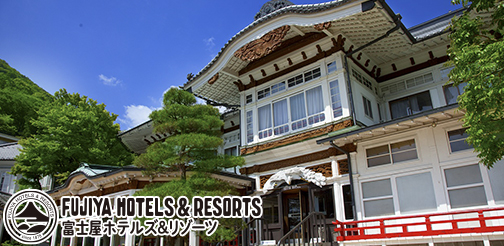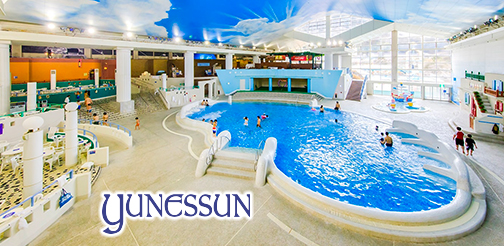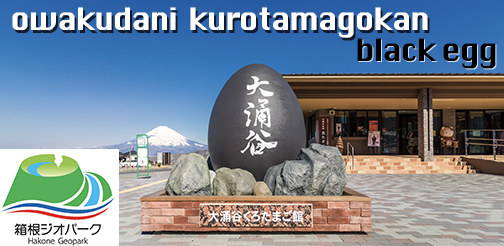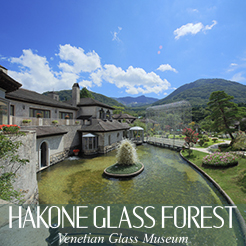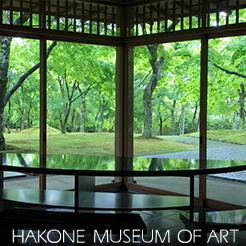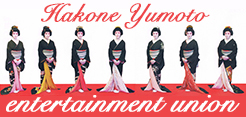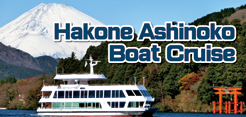
@naniwakonnzyou
What is the Hakone Ekiden?
Nestled in the picturesque landscapes of Japan, the Hakone Ekiden stands as a symbol of both athletic prowess and cultural significance in Japan for the past 100 years. This relay marathon, often referred to as the “Hakone Ekiden,” has deep roots in Japanese history, captivating locals and enthusiasts alike with its unique blend of sportsmanship and tradition.
The history of the Hakone Ekiden dates back to 1920, making it one of the oldest and most celebrated relay races in the world. The event takes place annually on the 2nd and 3rd of January, aligning with the country’s New Year celebrations. The race spans a challenging 217.1 kilometers, starting in Otemachi, Tokyo, and concluding the first day on the shores of Lake Ashi in Hakone, Kanagawa Prefecture. The same route runs back to Tokyo on the following day.
The origins of the Hakone Ekiden are intertwined with the ancient Japanese practice of “ekiden,” which translates to “station-to-station.” Historically, ekiden referred to the relay system used to transport official communications and goods during the Edo period. Drawing inspiration from this historical context, the Hakone Ekiden adopted the relay format, with university teams competing in a grueling two-day race passing a sash between racers on the team at predetermined spots along the race course.
Some call it one of the greatest races in the world. It is a sporting event full of drama, pride, physical perseverance, and mental fortitude. Now one of Japan’s most watched sporting events, the Tokyo Hakone Ekiden is a two-day university relay race held every year on January 2nd and 3rd for more than 100 years. The race fields teams of 10 runners from different Japanese Universities in a relay marathon race over 200km in two days. Each runner carries along and passes a sash to the next runner for the next leg. Strategy, endurance, and historic rivalries make for dramatic TV. The Hakone Ekiden is an event that especially appeals to the Japanese because ideas that form the basis of Japanese society and culture are venerated and on display here. The core ideals of mental strength, perseverance, and collectivism make this the biggest sporting event of the year for many Japanese. It is hosted by the Kanto Student Athletic Federation and co-hosted by the Yomiuri Shimbun Newspaper, credited with having the largest circulation of any newspaper in the world. In addition to the 19 participating Universities, there is also a Kanto Student Athletic Federation selection team made up of athletes from other schools. The course runs from the front of the Yomiuri Shimbun’s Tokyo Head Office Building in Otemachi, Chiyoda-ku, Tokyo to Lake Ashinoko in Hakone, Ashigarashimo-gun, Kanagawa Prefecture via Tsurumi, Totsuka, Hiratsuka, and Odawara relay stations, totaling 217.9 km (108 km outward and 109.9 km in return). The outward route from Tokyo to Hakone is run on January 2 and the return route from Hakone to Tokyo on January 3.
The Origins of the Hakone Ekiden
In October 1919, three people were on a train leaving Ueno Station in Tokyo. One of them was Shizo Kanaguri, a graduate of Tokyo Higher Normal School (now Tsukuba University). He participated in the 1912 Stockholm Olympics as a member of the marathon team, becoming the first Japanese Olympian. The other was Eiichi Sawada of Meiji University. Together with Rinjiro Deguchi of Meiji University, they ran the 830km route from Sapporo to Tokyo in 22 days. Genzaburo Noguchi, a professor of physical education at Tokyo Higher Normal School, represented Japan in the 1924 Paris Olympics Decathalon and was also an important person to the founding of this legendary race. The three of them were invited to be judges at a field day held at an elementary school in Konoha. They had a casual conversation in the car on the way there and talked about their dreams as track and field athletes. This was the beginning of the creation of the world’s oldest relay race, the Hakone Ekiden.
The Trans-American Ekiden
In the car, Kanaguri passionately argued that the Ekiden, a marathon relay race, was the best way to develop a large number of Japanese long-distance runners who could compete in the Olympics. However, Kanaguri had already run a race between Shimonoseki and Tokyo covering the Southern half of Japan with another Tokyo Higher Normal School student, Hiroyuki Akiba. Sawada, who was also on the train, had already run the Sapporo-Tokyo route running the Northern half of Japan, so the three of them felt that they had already run the whole of Japan. The three of them wondered if there was any way to train long-distance runners on an extraordinary scale. They came up with the idea of a “transcontinental marathon relay race across America”. The grand plan was to start in San Francisco, cross the Arizona desert, cross the Rocky Mountains, go through the rural areas of central America, and finish in New York. This was a plan of grand imagination by the young athletes. The three of them were determined to surprise people around the world and do something amazing. The “Trans-American Ekiden” started as a spur-of-the-moment idea in the car.
In order to make this idea a reality, the three tried to persuade the Hochi Shimbun Newspaper, which had a great understanding of athletics at the time, to raise funds. The three of them then went to Tokyo Women’s Normal School (now Ochanomizu University), where Kanaguri was working at the time, as well as Waseda University, Keio University, Meiji University, and Imperial University. The idea of a “Trans-American Ekiden” was born.
The idea of a “Trans-American Ekiden” was a bit of a surprise to many, but their peers and colleagues, and fellow students, who shared the same dream, were unanimously in favor of it. There was no one to argue against the idea. Immediately, in February of the following year, they decided to hold a qualifying round for the event. Initially, however, 13 universities and technical colleges in Tokyo were scheduled to participate in the race, but only a few schools were able to field 10 long-distance runners. In the end, four schools were chosen: Waseda University, Keio University, Meiji University, and Tokyo Higher Normal School.
So, where to run? When considering the ultimate goal of “crossing the American continent,” it was difficult to decide where to run. This was because, considering the ultimate goal of “crossing the American continent,” they expected to run through rugged mountain ranges, deserts, and other harsh natural conditions, terrain that was very foreign to the Japanese islands and most young athletes. First, the route between Tokyo and Mito, Ibaragi was chosen as a candidate. However, it was given up because it was too flat and provided little challenge to the runners. Next was the Tokyo – Nikko, Tochigi route. However, the distance would have made it a one-way course, and the traffic was extremely inconvenient, so it was dropped.
The last idea and option was the Tokyo-Hakone route. This route was the perfect fit for the tpe of athletic event they imagined. Convenience of transportation, the bravery of climbing the mountains of Hakone, and the fact that it would be a round trip course were the deciding factors. Perhaps it was the image of the athletes tackling the steep mountain roads of Hakone, the “steepest mountain in the world,” as the song goes, that came to mind. The route also followed the historic Tokaido Road which has connected Tokyo, or Edo as it was known, and Kyoto for centuries. The relay race would also pay homage to the letter carriers who would run between stations along the road to pass along letters to be carried between Edo and Kyoto.
The First Hakone Ekiden
After a long and difficult process, it was decided that the route would be a round trip along the Tokaido Highway between Tokyo and Hakone. Finally, on February 14, 1920, the following year, the race began in front of the Hochi Shimbun newspaper in Yurakucho and proceeded to Tokyo Higher Normal School (now Tsukuba University), Waseda University, Keio University, and Meiji University. Waseda University, Keio University, and Meiji University.At the starting point of the race was the figure of Shizo Kanaguri, now celebrated as “The Father of Marathon” in Japan. As the chief judge, he personally rang the starting gun with all his heart. This was the beginning of the “history of Hakone Ekiden,” colored by the glory and frustration, and the passion and pain of the men who put their hearts, bodies, and souls out for the pride and camaraderie of their friends, schools, and themselves. The event has become one of Japan’s most popular sporting events broadcast throughout the country during the New Years holidays. In the end, they did not make it across the American continent, but the passion of these three men and their passionate aspirations for the world still live on in the Hakone Ekiden.
War and the Ekiden
World War II affected the Hakone Ekiden: in January and November 1941, the war banned the use of the Tokaido and Hakone roads, so the race was run between Meiji Shrine and Kumano Shrine in Ome, Tokyo but this is not counted in the history of the event. The following year, the Japan Academic Federation was disbanded as a wartime order, and the Ekiden was cancelled. However, in 1943, the course was changed to run from Yasukuni Shrine to Hakone Shrine and back, despite the wartime situation, and Nihon University won the event for the fifth time. For the next three years, the race was cancelled again due to the war. After the war, the history of the Hakone Ekiden resumed with the 23rd race in 1947. It was at this time that the first qualifying round was introduced. The Yomiuri Shimbun offered to co-sponsor the event, but was forced to stay on as a sponsor due to GHQ guidance. One of the characteristics of the Hakone Ekiden at that time was that the number of students was so small that it was sometimes difficult to have a full team of 10 runners. For this reason, there were cases where athletes from other track and field events were read in, and some universities even brought in members from their rugby teams.
Ekiden Spreads Across Japan
The history of live broadcasts has also changed: in 1953, NHK radio broadcasted the race nationwide, and in 1979, TV Tokyo broadcasted the race live for the first time (only the finish line was broadcast live). The following year, NHK broadcasted only the second section of the race. The first nationwide broadcast was made by Nippon Television in 1987, and has continued to this day attracting fans from across the country for the drama, athletic feats, and inspiration from the athletes. Of the 15 championships held from 1920 to 1934, Waseda University won 7 championships and Meiji University won 5 championships, making it a time when the two schools were truly the top two. From the 16th edition in 1935, Nihon University became the first university to win the event four times in a row.
The Hakone Ekiden Now
The Hakone Ekiden is now a large-scale relay race of 217.1 km, running from Otemachi in Tokyo to Hakone in Kanagawa Prefecture and back over two days. The course is divided into 10 sections, with the first 5 sections finishing at Lake Ashinoko in Hakone as the outward route, and the 6th to 10th sections returning to Tokyo as the return route (the second day). Each section is run by a different member of the team. The most distinctive feature of the Hakone Ekiden is that it runs through the mountains of Hakone. The 5th (mountain ascent) and 6th (mountain descent) sections of the race run up (and down) over 800 meters in elevation, requiring special “aptitude” in addition to flatland speed. The temperature difference between the top and the bottom of the mountain is so great that sweating can easily lead to hypothermia and dehydration, and many runners have abandoned the race in the past. On the other hand, athletes who perform well in this section of the race have earned the title of “God of the Mountains” and often make headlines in newspapers and on TV shows after the race. Under the current rules, the race includes 21 teams, consisting of the 20 participating schools plus the open entry Kanto Student Union team, and the top 10 schools receive “seeding rights” that exempt them from the qualifying round for the competition the next year. The lower ranked have to win in the qualifying rounds held in October every year, which is a major turning point that will affect the team’s annual schedule. You can visit the Hakone Ekiden Museum on the banks of Lake Ashi in Hakone, or better yet, time your visit with the race to participate in the excitement and exhilaration of one of the world`s most famous races.
Ekiden and Japanese Culture
Beyond its competitive nature, the Hakone Ekiden holds immense cultural significance in Japan. The race’s timing, coinciding with the New Year, aligns with the Japanese tradition of embracing new beginnings. It is viewed as a symbol of determination, teamwork, and the pursuit of excellence – values deeply embedded in Japanese culture.
Spectators line the course, cheering on the runners, creating an electrifying atmosphere that reverberates through the challenging terrains of the Hakone course. The race is broadcasted nationally, captivating millions of viewers and further cementing its status as a cultural phenomenon.
In terms of global comparison, the Hakone Ekiden stands out as a unique blend of tradition and modern athleticism. While other renowned races like the Boston Marathon and the New York City Marathon command global attention, the Hakone Ekiden distinguishes itself with its relay format and university-centric focus.
The Boston Marathon, established in 1897, holds the distinction of being the world’s oldest annual marathon. Renowned for its historic course and iconic “Heartbreak Hill,” the Boston Marathon attracts elite runners from around the world. Unlike the Hakone Ekiden, the Boston Marathon is an individual race, showcasing the endurance and tenacity of individual athletes rather than teams. In contrast, the Hakone Ekiden shares some similarities with the Ekiden Relay in Chiba, Japan. The Chiba Ekiden, held in February, follows a relay format and features both university and corporate teams. However, the Hakone Ekiden’s historical significance, larger scale, and unique course make it a standout event on the global stage.
In terms of cultural impact, the Hakone Ekiden’s fusion of tradition and athleticism resonates strongly with the Japanese ethos. The race’s connection to the New Year’s celebrations and its portrayal in popular media further elevate its cultural significance. In contrast, races like the Boston Marathon have a more international appeal, drawing participants and spectators from various countries.
The Hakone Ekiden stands as a testament to Japan’s rich cultural heritage and its commitment to excellence in sports. The relay marathon, with its deep-rooted history, fierce competition, and cultural resonance, sets itself apart from other famous races worldwide. While the Boston Marathon and other iconic races capture the spirit of individual achievement, the Hakone Ekiden weaves a narrative of teamwork, tradition, and the indomitable spirit of the Japanese people. As the runners navigate the challenging course each year, they not only compete for victory but also contribute to the enduring legacy of the Hakone Ekiden in the tapestry of global athletic events.


